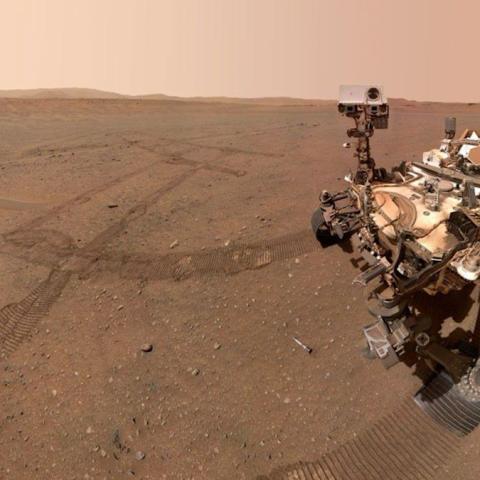The James Webb Space Telescope (JWST) is changing how we see the universe. Its incredible power lets us peer deep into the past of distant galaxies, including ones like our Milky Way. Recently, researchers have gained fresh insights into how these galaxies develop their unique shapes.
Disk galaxies, characterized by their flat, round forms, typically have a thick outer disk filled with stars and a thinner inner disk. Webb’s observations have uncovered stunning details about their evolution over the past 11 billion years, giving us a better grasp of how these structures came to be.
Today’s disk galaxies, including the Milky Way, feature two distinct layers: a broad, star-rich outer disk and a narrower inner disk. The outer disk stretches about 3,000 light-years across, while the inner disk is around 1,000 light-years thick. Understanding how these two parts form has puzzled astronomers for years. Webb’s detailed images have allowed a team of scientists to begin piecing together this timeline.
By focusing on 111 disk galaxies that date back to about 2.8 billion years after the Big Bang, researchers are making breakthroughs. They can now differentiate between the thick and thin disks across vast distances. Takafumi Tsukui, the study’s lead author, notes that Webb’s advanced clarity helps scientists measure these disks in ways that were previously impossible.
One exciting revelation is that disk galaxies form their thick outer disks first. The thinner inner disks appear later, with timing dependent on the galaxy’s mass. Massive galaxies tend to develop a two-disk structure around 8 billion years ago, while smaller ones only formed their inner disks about 4 billion years ago. This finding highlights how the mass of a galaxy influences its development.
Researchers attribute the differences in timing to gas motion within these galaxies. Using data from the Atacama Large Millimeter/submillimeter Array (ALMA), they support a theory called the “turbulent gas disk” hypothesis. During the early universe, turbulent gas fueled rapid star formation, creating a thick stellar disk. As stars formed, they began to stabilize the gas, leading to the formation of a thinner disk.
Webb’s observations affirm that the transition from a single thick disk to a dual-disk structure is gradual. Even as the galaxy evolves, its thick disk continues to grow, though more slowly than the thin disk.
One of the most impressive features of Webb is its sensitivity. This allows scientists to study faint galaxies, much like our own, from earlier periods in the universe’s history. For the first time, researchers have resolved thin stellar disks at such significant distances. They were surprised to find that these disks had formed as early as 8 billion years ago. Emily Wisnioski, a co-author of the study, expressed her amazement, stating it was unexpected to see thin stellar disks so far back in time.
The continuous revelations from JWST underscore how much we still have to learn about our universe. By studying disk galaxies, we can better understand our galactic neighborhood and the processes at work in cosmic evolution.
For more on the James Webb Space Telescope and its groundbreaking work, you can explore [NASA’s official resources on JWST](https://science.nasa.gov/mission/webb/).






















